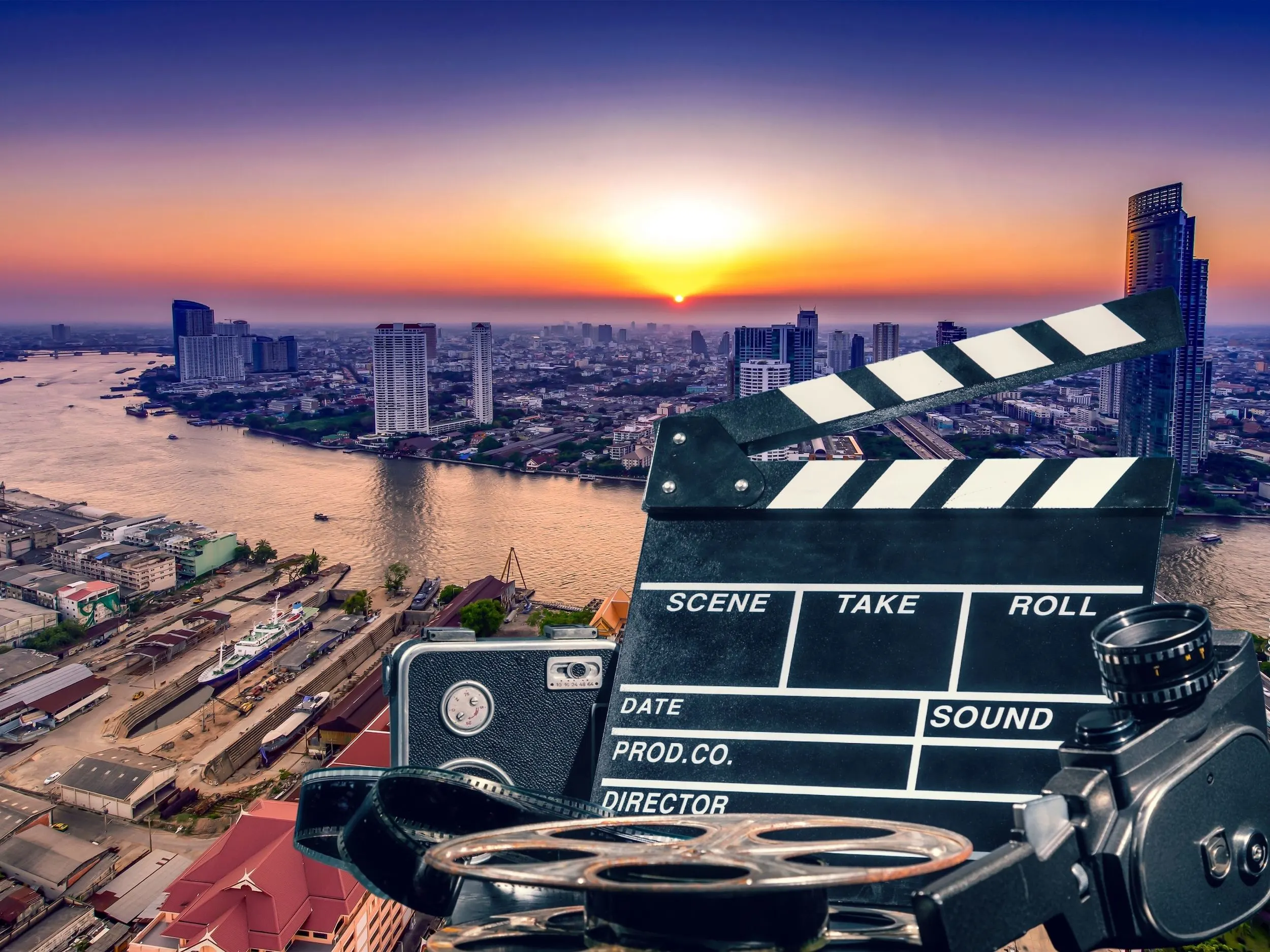Sofia De Vera combines a heartfelt passion for cinema with over 15 years of critiquing for esteemed film publications, wielding academic credentials from the University of Southern California and New York University, to serve as your personal guide through the enchanting worlds of film and television. Her full guest bio can be found here.
Thailand, the Land of Smiles, has a lot to offer both national and international filmmakers with magnificent natural and urban landscapes, friendly locals – and a generous film tax credits and incentives program. So it will come as no surprise that there are so many outstanding movies set in Thailand.
Watching a good movie is the best way to get inspired and choose your next destination. It is the reason we have assembled various lists of the best films shot in some of our all-time favorite travel destinations: Turkey, Afghanistan, Oregon, South Africa, Barcelona and Dubai.
There are things that a photo alone can’t capture. We are human, and we need movement: the waves crashing against a sandy beach, the sun setting behind a monumental temple, and people walking side by side through the most impressive constructions ever made. These are things that are better experienced with movement. These are things that belong in movies. And these things are Thailand.
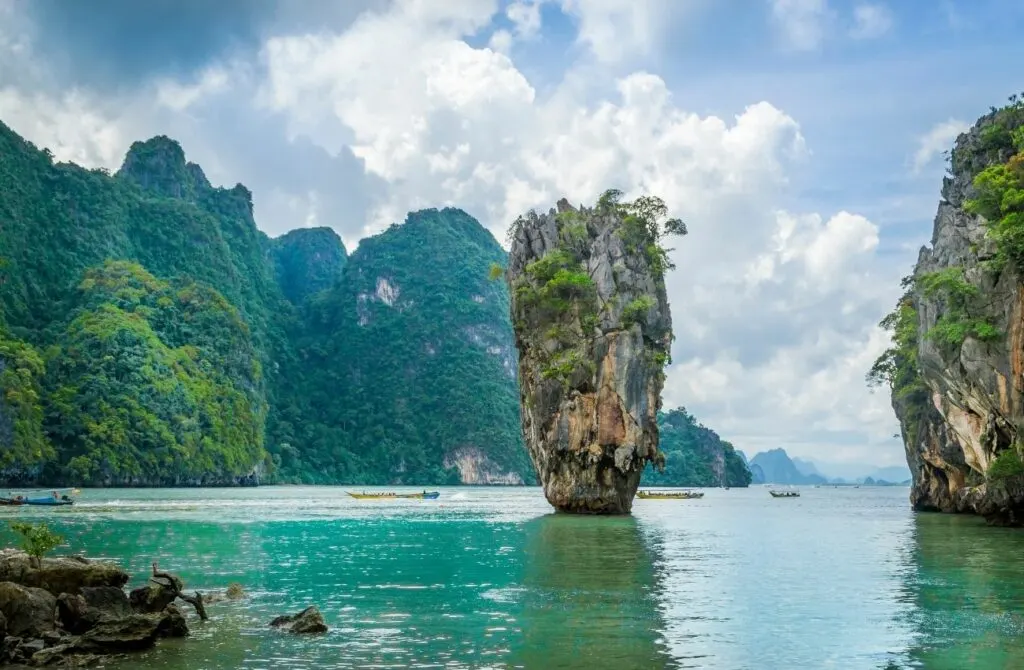
For a long time, both foreign and native directors have captured on film some of the most stunning sights and landmarks of the country. The local Thai cinema industry might be young but is certainly full of life. Its directors bring to the screen daring stories set in one of the most unique places in the country.
And how couldn’t filmmakers want to capture this place? It holds sights one wouldn’t be able to see anywhere else in the world. Its people tell some fascinating stories too. It’s not only the history of Thailand that interests Thai filmmakers, but also the history of its people, both loving and those who have since departed.
The movies in this list of movies set in Thailand together paint a picture of a complex country filled with gorgeous sights and diverse voices. With it, we hope to help audiences step into the often-contradictory world of Thailand and experience the scenery, subcultures, and different dynamics that make Thailand one of the most interesting countries on Earth.
These Thailand films have narratives that rely on their settings as much as their main protagonists, and as a result, spectators get a glimpse of Thailand through the director’s eyes. Although not all of these films are happy – tragedies and misery are as unavoidable in cinema as they are in life – each one provides panoramic vistas of this captivating country filled with peaceful people and wide smiles…
Wondering where to watch? It depends on where you live in the world and which streaming services you have. We link to the streaming service we watch on in each case - be it Netflix, Amazon Prime, Apple TV+, or elsewhere.
You can get one month free of Amazon Prime (or a 6-month trial for students) of Amazon Prime and also get immediate access to FREE Two Day shipping, Amazon Video, and Music. While you won't be charged for your free trial, you'll be upgraded to a paid membership plan automatically at the end of the trial period - though if you have already binged all these, you could just cancel before the trial ends.
Apple TV+ also has a one-week trial, and Hulu has a one-month trial (which can be bundled with Disney!). Another option might be using a VPN to access Netflix titles locked to other regions. Netflix is now available in more than 190 countries worldwide and each country has a different library and availability. US Netflix is (understandably) one of the best.
While we wish everything could just be in one place - for now, it seems these are the best streaming platforms to watch on.
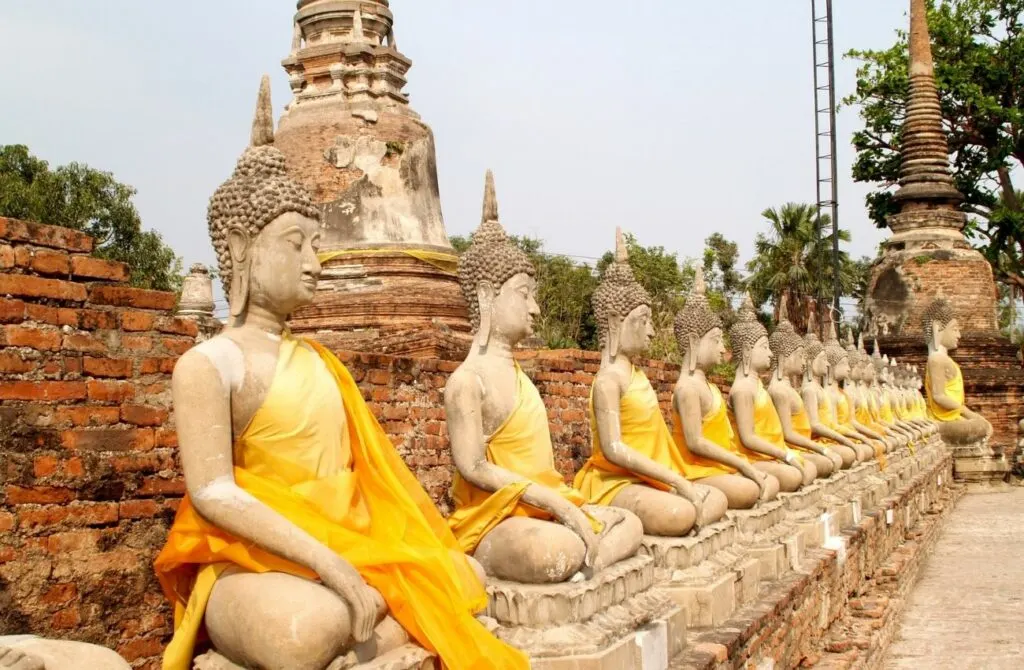
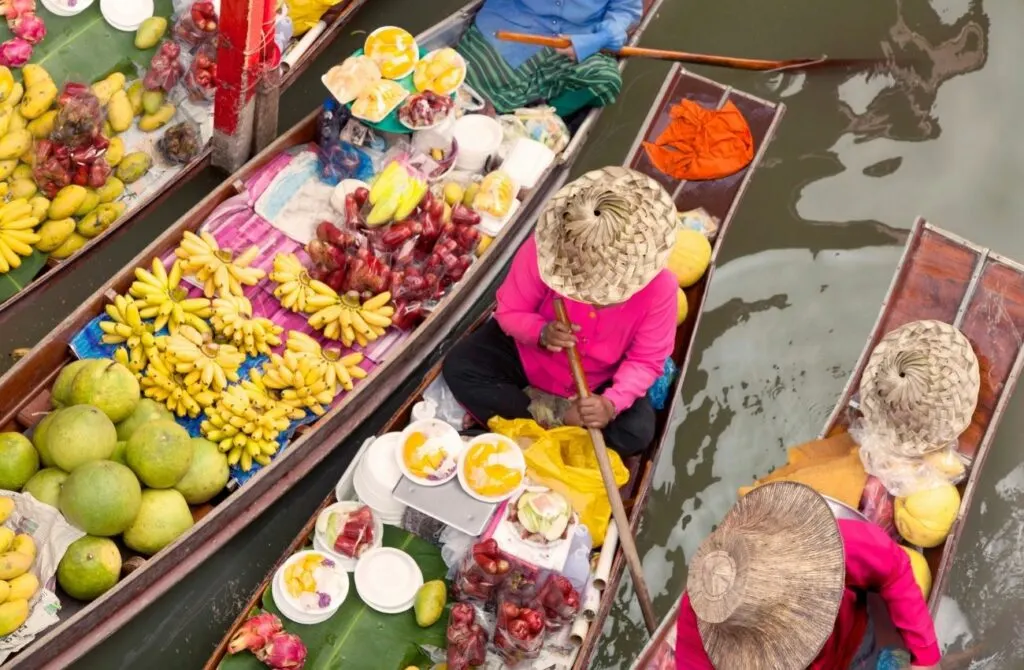
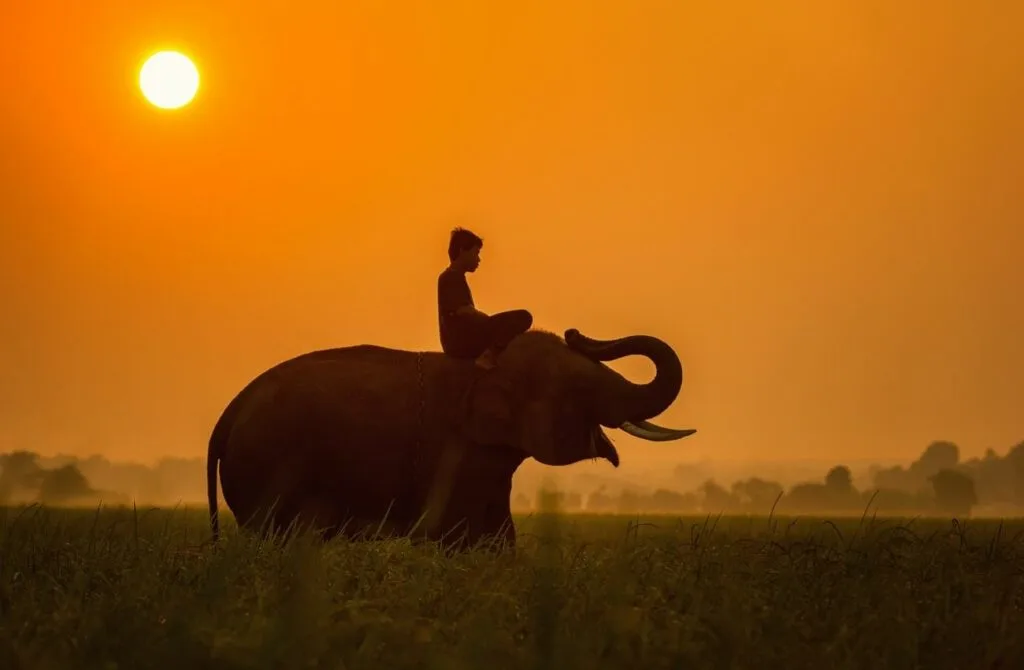
Page Contents
- The Beach (2000)
- White Lotus (2017)
- Anna And The King (1999)
- The King and I (1956)
- Bad Genius (2017)
- The Hangover Part II (2011)
- The Man With The Golden Gun (1974)
- The Big Boss (1971)
- Ong-Bak: Muay Thai Warrior / The Protector / Warrior King (2003)
- Beautiful Boxer (2003)
- Love Of Siam (2007)
- Tropical Malady (2004)
- Uncle Boonmee Who Can Recall His Past Lives (2010)
The Beach (2000)
The Beach (2000) is the third film by acclaimed director Danny Boyle. It stars a young Leonardo DiCaprio as Richard, an American who travels to Bangkok in search of adventure. There, he meets other tourists who let him into a secret: there’s an uninhabited paradisiacal island hidden away in the Gulf of Thailand. After a tragedy surrounding one of the tourists, Richard, together with a young French couple (Virgine Ledoyen, Guillaume Canet), decides to leave Bangkok and go to the island.
When they arrive on the island, they find the most beautiful place they have ever seen. A beach of white sand and crystalline water, embraced by limestone hills filled with vegetation. Everything they had heard was true. Almost. The island may be paradisiacal, but it wasn’t uninhabited. There’s a cannabis plantation run by Thai drug dealers. There’s also a community of travelers like them, who live in peace with the dealers. Richard and his friends join them, but soon their idyllic lives start to collapse.
The titular beach was filmed on Maya Bay on Ko Phi Phi Le Island. The movie is known for having popularized this stunning traveling destination. Millions of people have visited Ko Phi Phi Le since it came out, to the point where it had to be closed to avoid severe environmental damage. Luckily, since January 2022, the beach has opened again after three years of coral rejuvenation programs.
White Lotus (2017)
White Lotus (2017), by Somchay Phakonkham, is a documentary film set in Wat Phra Dhammakaya, the largest Buddhist temple in Thailand. The film tells the real story of Matthew Trubiani, an Australian actor who was temporarily ordained as a monk. It follows him from his arrival at the Bangkok airport to his departure from the temple several months after.
This is a great film to watch if you are interested in Buddhist monks. People from the West usually have very small knowledge about what a monk is, what he does, and why he does it. Usually, we know they meditate, but that’s about it. White Lotus delves deep into the process of becoming a monk and the difficulties of accepting this new way of life.
Wat Phra Dhammakaya is one of the most unique Buddhist temples. It’s a complex of a thousand acres and houses over three million monks. Its characteristic look is due to the minimalistic style of its buildings and ornamentations, very unlike most Buddhist temples. The most impressive construction in this complex is the Dhammakaya Cetiya, a dome-like structure half-painted in gold. It’s surrounded by over three hundred thousand Buddha statues and is considered “a symbol of world peace through inner peace.”
Anna And The King (1999)
Anna And The King (1999), by Andy Tennant, is a biographical film based on the 1944 novel Anna and the King of Siam. Set in the 19th century, it tells the story of Anna Leonowens, played by Jodie Foster, a British woman who becomes the teacher of the royal children of King Mongkut (Chow Yun-fat), the fourth king of Siam. The novel itself is a fictionalized adaptation of her real diaries.
The life of Anna Leonowens was very interesting. Indian by birth, she traveled all over the world. She was part of the first wave of feminism, which can be seen in the movie with her critiques of the status of women in Siam. When her husband died, she opened a school in Singapore and supported her family by teaching the children of British officers. Her time in Siam was foundational for Prince Chulalongkorn, the boy who would become king and abolish slavery in Thailand.
The film paints an enthralling depiction of old Siam, the name by which Thailand was known before it was changed in 1939. One can appreciate the faithful recreation of the Grand Palace, the house of the Kings of Siam, and its main hall. One of the most touching scenes in the movie takes place there: Mongkut’s daughter, Fa-Ying (Melissa Campbell), runs through the hall and up the steps of the golden throne to hug her father.
The King and I (1956)
The King and I (1956), by Walter Lang, is a musical film also based on the novel Anna and the King of Siam. An adaptation of the Tony Award-winning Broadway show, it stars Yul Brynner as King Mongkut and Deborah Kerr as Anna, who replaced Gertrude Lawrence after her premature death. The movie was a huge success, winning five of the nine Academy Awards it was nominated for.
This musical offers a more romantic depiction of Anna’s story, filled with color and, of course, music. But what it lacks in realism, it gains in charm. One of the most famous scenes in the books, also seen in the 1999 adaptation, is the dance between Mongkut and Anna. In this film, they dance the polka over the huge marble hall of the palace. Overall, it’s a very fun movie to watch.
If you love musicals, you owe it to yourself to watch this film. The acting and singing were very lauded back in its time, winning Brynner an Oscar and a Tony, and Kerr a Golden Globe. It has a charm that only movies from this era in cinema can have, but it still holds up today. It’s big, colorful, and full of movement. A remake was announced in early 2021, so we may see this story play out again on the big screen.
Bad Genius (2017)
Bad Genius [ฉลาดเกมส์โกง] (2017), by Nattawut Poonpiriya, is a thriller film about a top-grade student who develops a scheme to cheat on the STICs. Since these tests are standardized, the scheme can be used by anybody in the country. The cheating scheme in the movie is based on an actual scandal that happened in China in 2014. Amongst other accolades, the movie won twelve awards at the Suphannahong National Film Awards.
The film focuses on Lynn (Chutimon Chuengcharoensukying), a genius high school student with a bright future. After she helps her friend, the rest of their classmates ask her to help them too. She does and gets caught, losing her scholarship. Angered with the system, Lynn devices a plan to sell the answers for the STICS: she will travel to Australia, where the exam is first taken, then send the answers to Thailand.
This is a great film to watch if you love heists like Ocean’s Eleven or The Italian Job. The director (and writer) mixed the thrilling narrative and editing of heist movies with really fun young characters. It’s a movie anyone can enjoy, and one of the best to come out of Thailand in the last years.
The Hangover Part II (2011)
The Hangover Part II (2011), by Todd Phillips, is a comedy film that follows the adventures of long-time friends Phil (Bradley Cooper), Stu (Ed Helms), and Alan (Zach Galifianakis) after a wild night in Bangkok. A sequel to the first part set in Las Vegas, this time Stu has gotten married, and the one who gets lost is Teddy (Mason Lee), his fiancée’s brother. In order to find him, they travel all over the city, seeing some of its best and its worst parts.
This irreverent comedy offers a look at the least tasteful side of Bangkok but does so in a lighthearted way. It can also offer some beautiful shots of the country as a whole. The hotel where the wedding takes place, for example, is the five-star resort Phula Bay, on the dreamy coast of southern Thailand. The suite where the characters meet detective Kingsley can be found at the luxurious hotel Lebua at State Tower in Bangkok.
The best thing about the film is that it shows the famous tourist attraction known as the Ancient City, located in Bangpoo. Both a park and a museum, this “city” was built in 1972 as a way to display accurate replicas of Thailand’s most beautiful ancient sites. With time, even some original constructions have been transported to the museum, where they could be better-taken care of. During a visit, one can appreciate over a hundred Thai architectural achievements from all eras.
The Man With The Golden Gun (1974)
The Man With The Golden Gun (1974), by Guy Hamilton, is the ninth James Bond movie. It stars Roger Moore (for some, the best Bond) as the famous British spy and Christopher Lee as Francisco Scaramanga, an assassin that kills with a golden gun. His search for Scaramanga takes Bond first to Beirut, then Macau, and finally Bangkok.
The film was one of the first depictions of modern Thailand in a Hollywood movie. It depicts Bangkok before it became a tourist destination when it was a smaller city. Bond visits one of the casinos that were and are characteristic of the city. It also shows what is a staple of Thai culture: the martial art of Muay Thai. We see Bond be overpowered again and again by the practitioners of this harsh but enthralling way of fighting.
The final duel between Bond and Scaramanga takes place in the stunning Phang Nga Bay, in southern Thailand. The duel on the beach became an iconic scene in pop culture, and that’s mainly due to the sight of the islands in the bay, particularly one of them, Ko Ta Pu, a narrow islet that rises like an obelisk from the water. To this day, it’s known as the James Bond Island – and one of the most famous James Bond filming locations (maybe on second to Skyfall…)
The Big Boss (1971)
The Big Boss [唐山大兄] (1971), by Lo Wei and Wu Chia Hsiang, is a hit action film. The first major film Bruce Lee starred in, and it catapulted him into stardom. It was produced by Raymond Chow, a Hong Kong native responsible for making martial arts movies internationally famous.
Bruce Lee plays Cheng, a Chinese man who emigrates to Pak Chong, Thailand, to work in an ice factory with other Chinese workers. Having sworn to stay away from violence, he ignores the thugs that bother his cousin. He discovers that the factory is actually a front for a business of drug dealers, causing his life and that of his cousins to be endangered.
Besides the great action, The Big Boss offers a great look at the Pak Chong district, one of the most beautiful places in Thailand. This area is known for its resorts and large natural spaces, being one of the places that people from Bangkok visit on the weekend. It’s also home to the Khao Yai National Park, one of the largest in the country.
Ong-Bak: Muay Thai Warrior / The Protector / Warrior King (2003)
Ong-Bak: Muay Thai Warrior [องค์บาก] (2003), by Prachya Pinkaew, was actor and stuntman Tony Jaa’s breakout film. The story follows Ting, a young man who lives in a peaceful village in rural Thailand. The villagers pray daily at the feet of a Buddha statue. One day, they find that thieves from Bangkok had stolen the head of the Buddha, throwing the village into disarray. So Ting travels to the city in search of the thieves.
This is a great film to watch if you like martial arts. As a stuntman, Tony Jaa did his own stunts. But in Ong-Bak, he took the portrayal of an action hero to a whole new level: he did all his stunts, including jumps and falls, without the aid of wires or any kind of computer-generated graphics.
What we see him do in this film is exactly what he did: it’s all-natural. This movie really emphasizes the art in martial arts.
Beautiful Boxer (2003)
Beautiful Boxer [บิวตี้ฟูล บ๊อกเซอร์] (2003), by Ekachai Uekrongtham, is a biographical film that follows the life of Parinya Charoenphol, a transgender female Muay Thai fighter. Male kickboxer Asanee Suwan was chosen to portray Parinya, with her own approval. His performance won him the Thailand National Film Association Award for Best Actor, along with several other film festival awards.
The life of Parinya was followed by the media ever since her first big win in 1998 when she was only sixteen. What surprised and captured the public was the fact that Parinya wore a full face of makeup while she fought. Back then, she identified as a kathoey; a Thai term used to describe an identity that’s neither male nor female: sometimes it refers to transgender women, other times to intersex people or simply cross-dressers. While kathoeys were banned from other sports, the Muay Thai community welcomed Parinya with open arms.
This is a great film to watch if you’re interested in gender and identity. It does a great job of portraying the struggles Parinya had to go through as she embraced her identity more and more. We watch her achieve a balance between fighting, something that is perceived as masculine and being a woman herself.
The film portrays the moving moment in which Parinya had to ask her father for his permission to have sex-change surgery. Beautiful Boxer tells an emotional and uplifting story about becoming who you really are.
Love Of Siam (2007)
Love of Siam [รักแห่งสยาม] (2007), by Chookiat Sakveerakul, is a romantic drama film. It tells the story of multiple young characters as they deal with friendship, family, and, most of all, love. The movie was a big hit in Thailand, winning almost thirty awards in all major national film award events, including five Best Picture’s.
The movie revolves around two old-time friends: outgoing and popular Tong (Mario Maurer) and quiet but musically talented Mew (Witwisit Hiranyawongkul). After several years without seeing each other, they meet by chance in the shopping area of Siam Square in Bangkok.
None of them seem to find love: Tong has a girlfriend who he doesn’t love (Chanidapa Pongsilpipat), Mew is secretly admired by his neighbor whom he doesn’t care for (Kanya Rattanapetch). This meeting by chance reawakens feelings in Mew, so he tries to get closer to Tong by helping him to deal with his alcoholic dad.
With this film, Sakveerakul pushed the envelope in Thai LGBTQI+ characterization. While Thai cinema has a lot of gay characters, most of them are presented as overtly effeminate men, whereas in this movie, the characterization defies that stereotype. The fact that the promotional material didn’t reveal to audiences that two of the characters were gay even caused some controversy, but the movie still performed incredibly well at the box office.
Tropical Malady (2004)
Tropical Malady (2004), by “new Thai wave” director Apichatpong Weerasethakul, is one of the greatest Thai films ever made. Like other stories from Weerasethakul, it has the feeling of a fantastical dream, like a fable told in the night. It was shown at the Cannes Film Festival and won the Jury Prize, becoming the first Thai film to achieve the honor.
The film holds two narratives. The first one is a story about a soldier named Keng (Banlop Lomnoi), stationed in rural Thailand, who falls in love with a villager named Tong (Sakda Kaewbuadee). The two of them spend some time together, and they seem to be enjoying each other company. But they don’t completely connect: there’s something either Keng or Tong can’t let go. It’s all unsaid, left to the viewer’s imagination.
In the second narrative, Lomnoi again portrays a soldier. He is sent into the woods, all alone, to kill a tiger shaman (played by Kaewbuadee). He chases the shaman through the woods while animal spirits tell him that if he doesn’t kill the shaman, he himself will become a ghost. The movie ends with a final confrontation between the soldier and the tiger.
The ending wraps up both narratives in a magical way, with a very interesting idea of what love is and what it entails.
Uncle Boonmee Who Can Recall His Past Lives (2010)
Uncle Boonmee Who Can Recall His Past Lives [ลุงบุญมีระลึกชาติ] (2010) is another essential movie by Apichatpong Weerasethakul. Inspired by a Buddhist book about reincarnation, the movie tells the story of Uncle Boonmee, a man who is about to die. It was the first Thai film to win the Palme d’Or at the Cannes Film Festival.
Uncle Boonmee is about to die from a failing kidney. His sister-in-law, his nephew, and his nurse are taking care of him, administering dialysis treatments, keeping him company, and praying. One dinner, two unexpected guests arrive; the ghost of Boonmee’s dead wife and his lost son, who has become a monkey-like creature. They join the family in Boonmee’s last days. Then he starts to dream about his past lives.
This is a great film to watch if you are interested in the ideas and conceptions that serve Buddhism. At the base of this religious practice is the cycle known as samsara: we die and are born again and again until we attain enlightenment, also known as nirvana. The night the Buddha achieved this state, he was able to recall the hundreds of past lives he had lived.
The movie shows Uncle Boonmee’s death as a kind of meditation. He looks through the lives of his spirit and reflects on them. He meditates. Whether or not he gains enlightenment by the end of the movie, that’s for the viewer to decide.

